Abstract
Administration of high doses of amiodarone to young adult rats leads to phospholipidosis of the lung, with extensive phospholipid storage by type II pneumonocytes and alveolar macrophages. Biochemical analysis reveals an increase in the total phospholipid content of the lung and in the proportion of phosphatidylcholine. The cause of the phospholipidosis is suggested to be the inhibition of lysosomal phospholipases, responsible for catabolizing phospholipids. It is shown that amiodarone is a potent inhibitor of phospholipases prepared from the soluble fraction of adult rabbit lung lysosomes.
Full text
PDF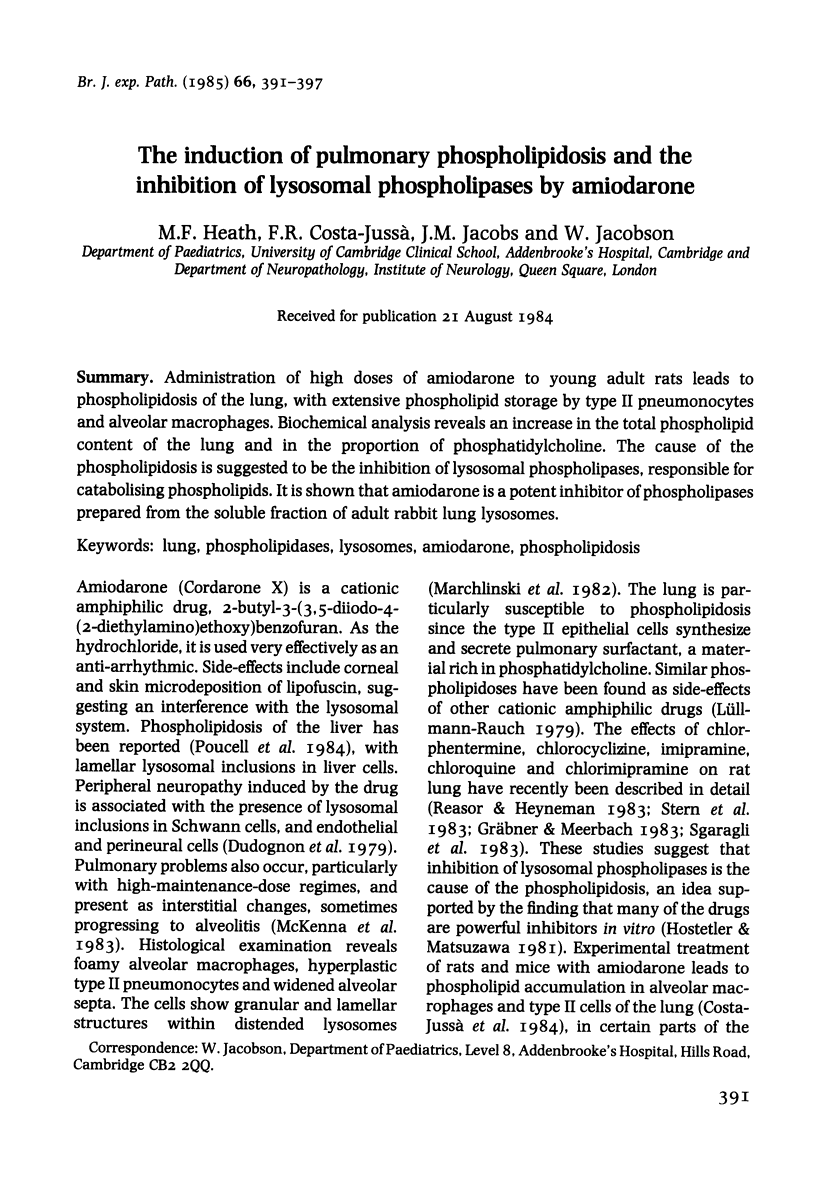
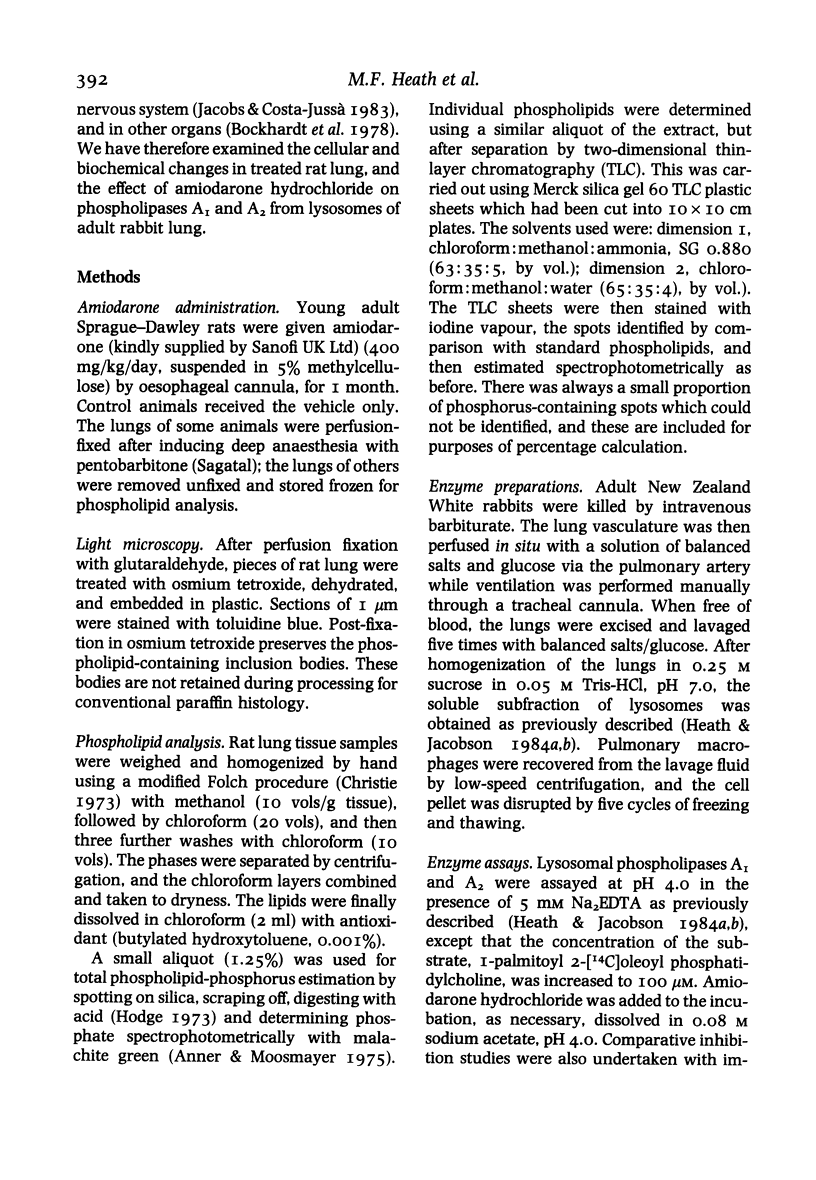
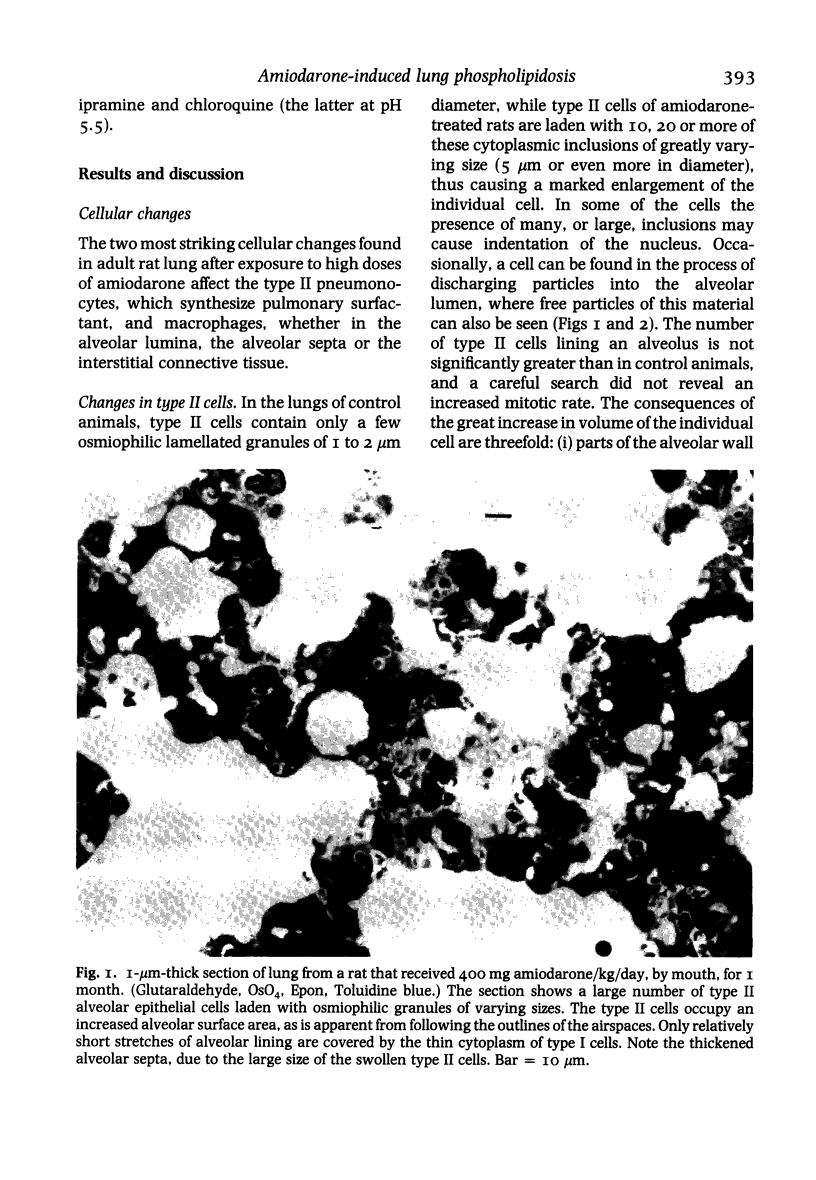
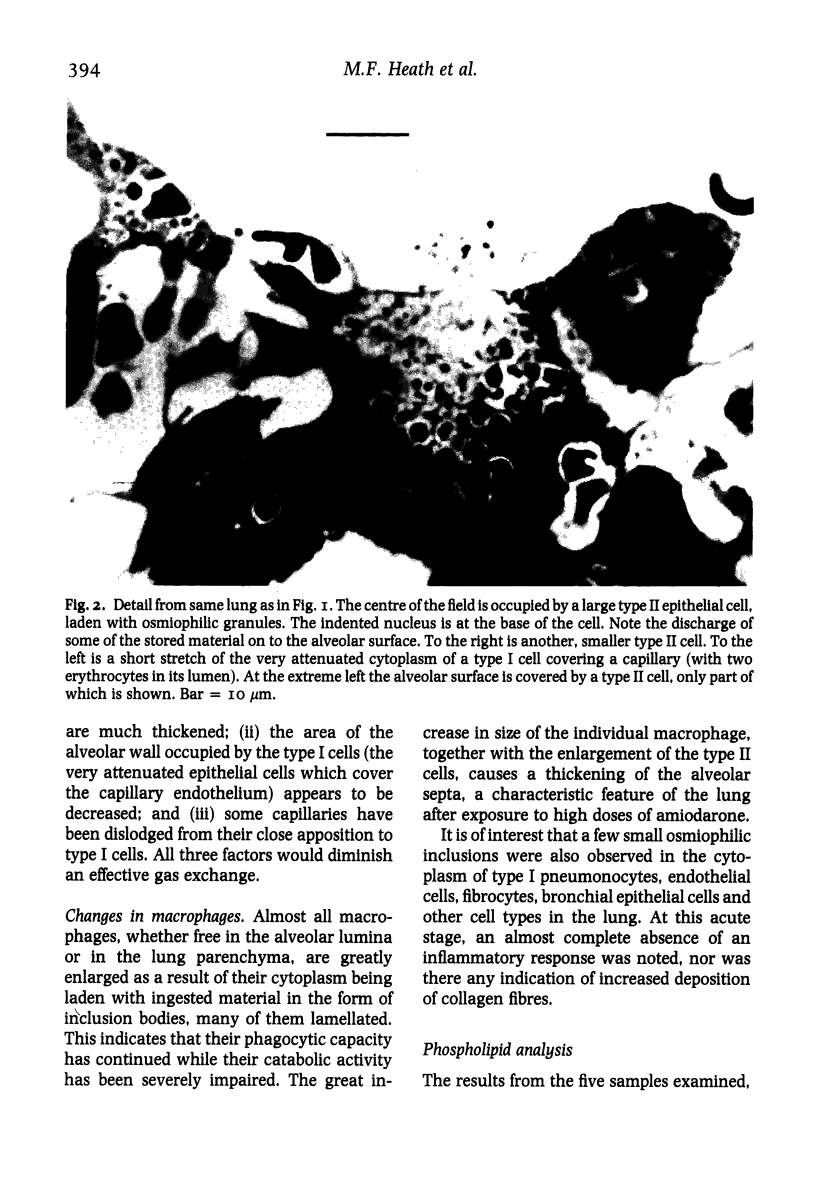
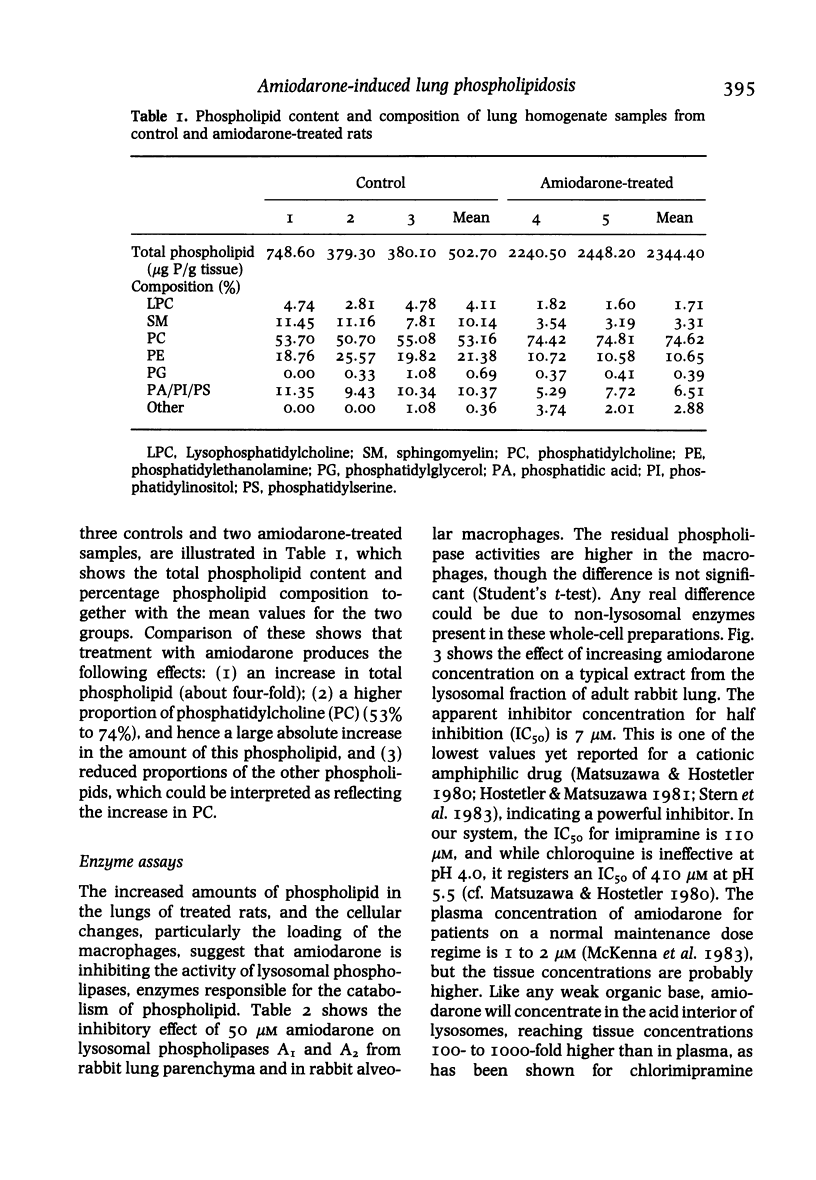
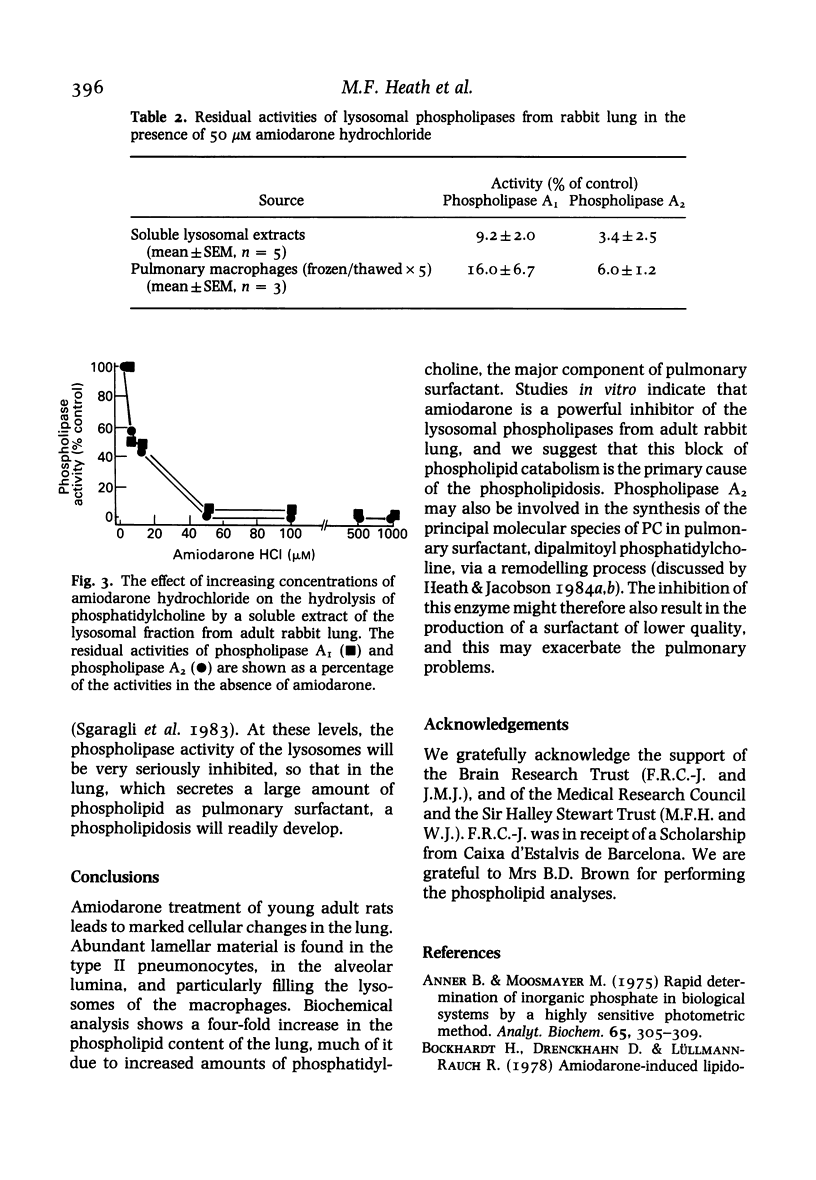
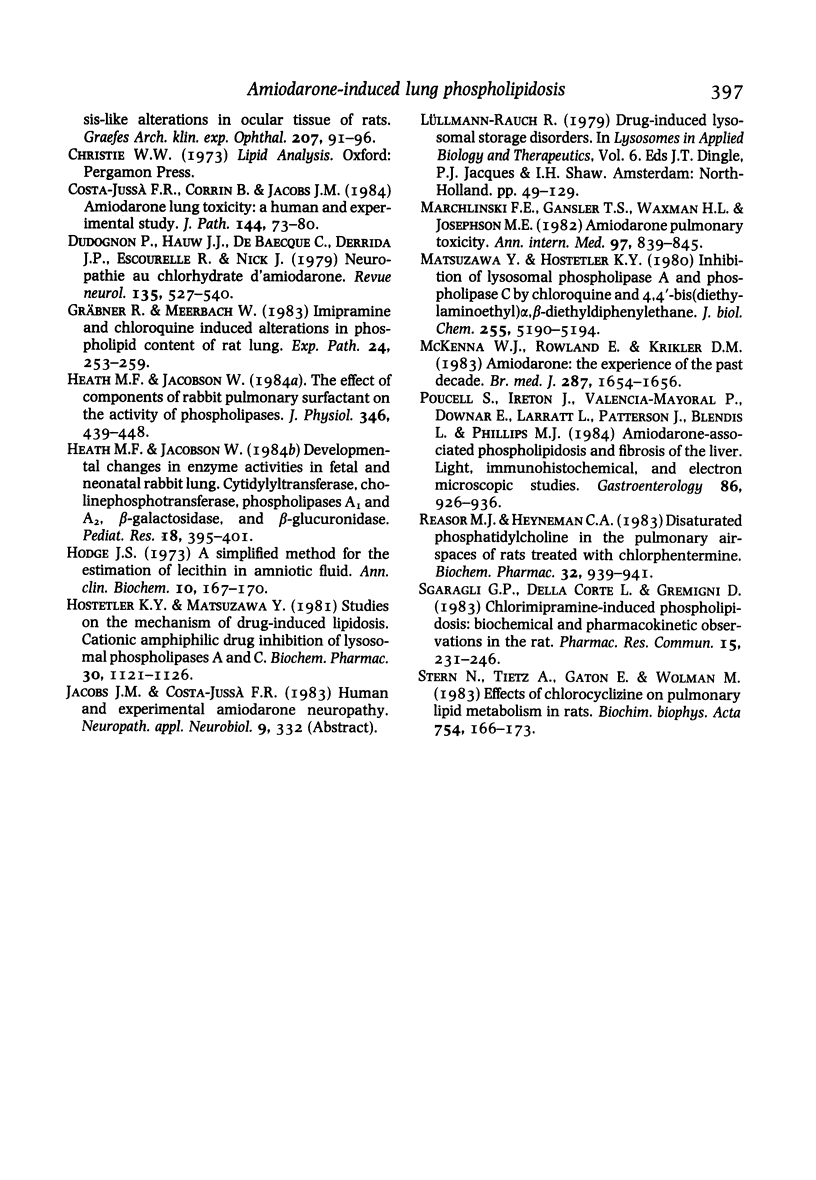
Images in this article
Selected References
These references are in PubMed. This may not be the complete list of references from this article.
- Anner B., Mossmayer M. Rapid determination of inorganic phosphate in biological systems by a highly sensitive photometric method. Anal Biochem. 1975 May 12;65(1-2):305–309. doi: 10.1016/0003-2697(75)90514-x. [DOI] [PubMed] [Google Scholar]
- Costa-Jussà F. R., Corrin B., Jacobs J. M. Amiodarone lung toxicity: a human and experimental study. J Pathol. 1984 Oct;144(2):73–79. doi: 10.1002/path.1711440202. [DOI] [PubMed] [Google Scholar]
- Dudognon P., Hauw J. J., de Baecque C., Derrida J. P., Escourolle R., Nick E. J. Neuropathie au chlorhydrate d'amiodarone. Etude clinique et histopathologique d'une nouvelle lipidose médicamenteuse. Rev Neurol (Paris) 1979 Jul-Aug;135(6-7):527–540. [PubMed] [Google Scholar]
- Gräbner R., Meerbach W. Imipramine and chloroquine induced alterations in phospholipid content of rat lung. Exp Pathol. 1983;24(4):253–259. doi: 10.1016/s0232-1513(83)80013-9. [DOI] [PubMed] [Google Scholar]
- Hostetler K. Y., Matsuzawa Y. Studies on the mechanism of drug-induced lipidosis. Cationic amphiphilic drug inhibition of lysosomal phospholipases A and C. Biochem Pharmacol. 1981 May 15;30(10):1121–1126. doi: 10.1016/0006-2952(81)90451-2. [DOI] [PubMed] [Google Scholar]
- Marchlinski F. E., Gansler T. S., Waxman H. L., Josephson M. E. Amiodarone pulmonary toxicity. Ann Intern Med. 1982 Dec;97(6):839–845. doi: 10.7326/0003-4819-97-6-839. [DOI] [PubMed] [Google Scholar]
- Poucell S., Ireton J., Valencia-Mayoral P., Downar E., Larratt L., Patterson J., Blendis L., Phillips M. J. Amiodarone-associated phospholipidosis and fibrosis of the liver. Light, immunohistochemical, and electron microscopic studies. Gastroenterology. 1984 May;86(5 Pt 1):926–936. [PubMed] [Google Scholar]
- Sgaragli G. P., Della Corte L., Gremigni D. Chlorimipramine-induced phospholipidosis: biochemical and pharmacokinetic observations in the rat. Pharmacol Res Commun. 1983 Mar;15(3):231–246. doi: 10.1016/s0031-6989(83)80009-5. [DOI] [PubMed] [Google Scholar]




